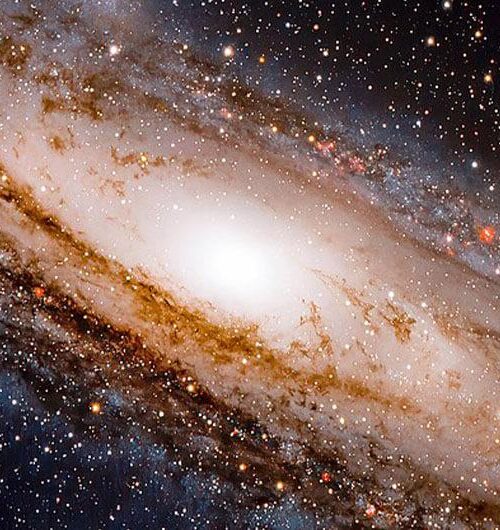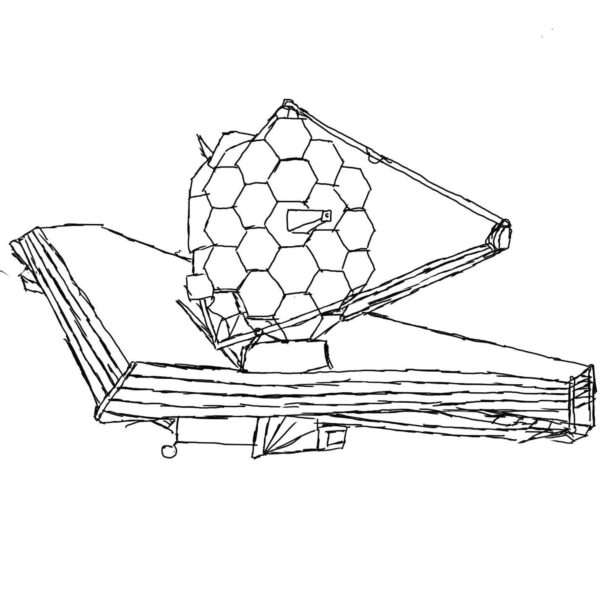October 15, 2024

By: AEOP Membership Council Member Ethan Zhou
When I was small, I liked to crane my neck to look up through the windshield on nighttime car rides and get lost in the stars. I was amazed by the legend my mom told me about the goddess Chang’e, who stole an elixir of immortality and escaped to the moon. I could not help but wonder what was out there. For thousands of years, humans have been curious about the universe. However, until now, we have only explored about 4 percent of the visible universe.
Astronomical surveys, like the Dark Energy Survey or Infrared Deep Sky Survey, enabled by advanced telescopes, are needed to help us understand the universe. I have been following the James Webb Space Telescope since its launch; it is truly a marvel of science and engineering. I am super excited about what it reveals to us about the universe.
 It was fascinating for me to learn about the precise design of the foldable honeycomb array of mirrors and the unprecedented creation of the giant sunshield made out of thin fabric for the James Webb Space Telescope. It was nerve-racking to follow the deployment of the sunshield; it was impossible to control the movement of fabric perfectly, and the sunshield was absolutely needed to chill the telescope to ensure proper function. It was mind-blowing to witness the alignment of the mirrors under the control of “motors that can nudge each mirror segment by increments of half the width of a virus until they’re all in place.” Finally, it was exhilarating to see the first images from James Webb that captured faint signals of some distant galaxies for the first time.
It was fascinating for me to learn about the precise design of the foldable honeycomb array of mirrors and the unprecedented creation of the giant sunshield made out of thin fabric for the James Webb Space Telescope. It was nerve-racking to follow the deployment of the sunshield; it was impossible to control the movement of fabric perfectly, and the sunshield was absolutely needed to chill the telescope to ensure proper function. It was mind-blowing to witness the alignment of the mirrors under the control of “motors that can nudge each mirror segment by increments of half the width of a virus until they’re all in place.” Finally, it was exhilarating to see the first images from James Webb that captured faint signals of some distant galaxies for the first time.
The successful deployment of the James Webb Space Telescope is one important step closer to deciphering some of the mysteries of the universe. Looking at the first direct image of a planet outside our solar system, along with the evidence of life-supporting molecules – including methane and carbon dioxide – in the atmosphere of a nearby exoplanet, were mesmerizing moments that inspired me to be ambitious in my STEM exploration.
In addition, the development and deployment of the James Webb Space Telescope was an amazing international collaboration over three decades. According to NASA, over 300 universities, organizations, and companies across 29 U.S. states and 14 countries were involved in this effort. Its success shows how governments, research institutions, and private industries can work together to advance technology and overcome crucial hurdles. The persistent dedication of this group of researchers and engineers in this truly global collaboration is especially encouraging and inspiring to me.
When I read articles, follow NASA information outlets, and explore news stories on the fascinating developments of the James Webb Space Telescope, it’s rewarding to be able to make connections with what I have learned in physics, math, computer science, and robotics. An interesting project I would love to work on, if given the opportunity, is to develop reinforcement learning tools to optimize astronomic surveys, given the many variables involved in large space-based telescope operations.
Find a Volunteering Opportunity
Visit our Program Volunteers page for a tool to find the best opportunity for you.
